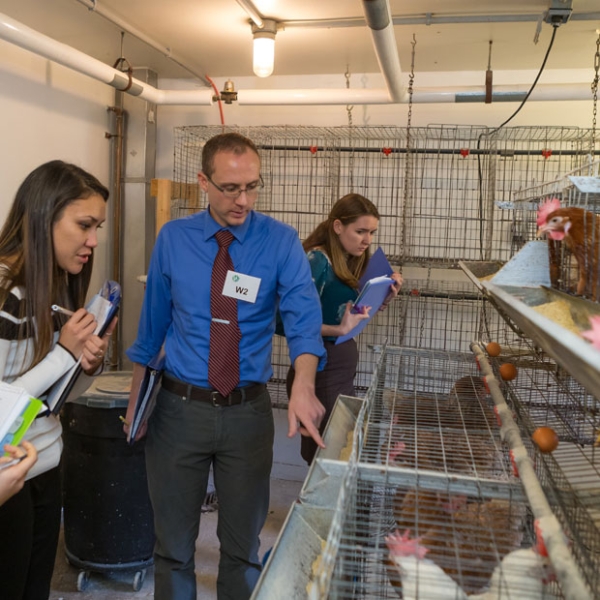AVMA working group helps navigate opioid abuse epidemic
 An AVMA working group has taken up the task of providing needed information to help veterinary professionals contribute productively to the national response to human opioid addiction.
An AVMA working group has taken up the task of providing needed information to help veterinary professionals contribute productively to the national response to human opioid addiction.
Veterinarians prescribe or dispense opioids for very limited uses, and do so relatively infrequently; however, it is critical for certain animals to receive these medications. Opioids are used primarily to treat pain in veterinary medicine and are an important tool for veterinarians because they can be used with minimal risks to very sick patients.
Just like everyone else, veterinarians are very concerned about the human opioid drug crisis. Though our animal patients are not the ones struggling with opioid addiction, the practices we already follow when it comes to the responsible use of opioids help us address opioid abuse in humans. These thoughtful steps include meticulous record-keeping and control of opioids, as well as a multi-modal approach to patient care that uses not only pharmaceuticals, but also other interventions to effectively manage pain.
Not only are veterinarians acutely aware of, and educated about, the risks involved with prescribing narcotics; we are required by the U.S. Drug Enforcement Administration (DEA) to adhere to stringent regulations when handling, prescribing, and controlling these substances. Veterinarians also must register with the DEA into prescribe opioids.
The AVMA’s six-member opioid working group has identified a suite of resources for development that will help veterinarians respond to the human opioid crisis without jeopardizing the care of our animal patients.
Members of the group are working alongside AVMA staff to create these tools and make them available to AVMA’s member veterinarians. Among the resources being prepared are items that support veterinarians and their staff in complying with legal reporting requirements, provide state-by-state information about prescription drug monitoring programs and veterinary continuing education requirements, raise awareness about “vet shopping,” and more.
The AVMA also works with federal regulators such as the U.S. Food and Drug Administration and DEA to ensure that the needs of veterinarians and our patients are protected when regulations are reviewed and considered. Expanded restrictions and any other proposed solutions to managing opioid abuse must support the ability of veterinarians to appropriately care for our patients, and the AVMA is committed to protecting veterinarians’ ability to access, prescribe, and dispense these drugs so that patient care is not compromised.
In addition, the opioid crisis is forcing more and more states to revise their prescription drug monitoring programs (PDMPs) to reduce prescription drug abuse and diversion, and this can impact veterinarians in unexpected ways. With this in mind, the working group also is developing resources for state veterinary medical associations to use in addressing the unique challenges that arise as regulators consider including veterinarians in these programs.
The AVMA and our member veterinarians look forward to actively participating in finding a constructive solution to the opioid crisis that grips U.S. communities.
Thank you to these veterinarians who are serving on the AVMA Opioid Working Group:
- Amanda Bisol
- Christine Calvert
- Bruce Coston
- Dayna Wiedenkeller
- Sam Miller
- Jennifer Jones Shults



Comments
Addiction in Veterinary Medicine
As a medical professional who treats those afflicted with the disease of addiction, i have a keen interest in the progress of self-monitoring and the data generated help plot strategies to curb this epidemic. Is there a national monitoring program for Veterinary Professionals and is there any data available?
Add New Comment